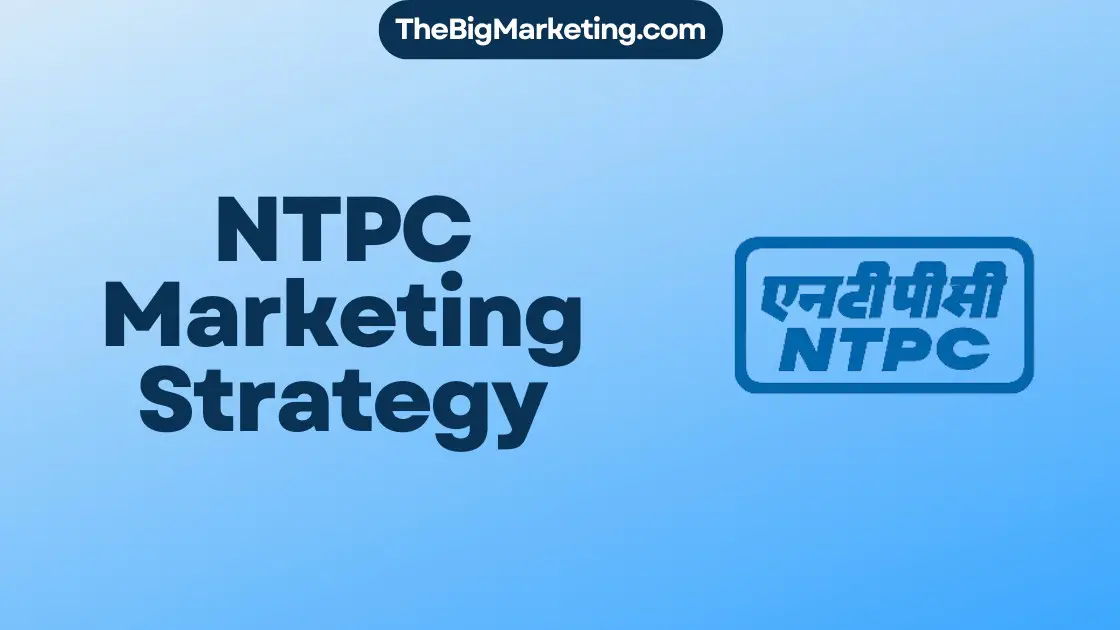Scotiabank, one of Canada’s big five banks, is making significant strides in its marketing strategy to enhance its position in the market in 2024. With a focus on innovative marketing tactics, a robust digital approach, impactful brand positioning, and effective promotional activities, Scotiabank is taking a comprehensive approach to achieve its marketing goals. This case study delves into the various facets of Scotiabank’s marketing strategy, highlighting its key initiatives for the future.
Key Takeaways:
- Scotiabank is implementing a comprehensive marketing strategy to strengthen its market position in 2024.
- The bank emphasizes innovative marketing tactics, a strong digital approach, impactful brand positioning, and effective promotional activities.
- Scotiabank targets both male and female customers in the age groups of 20-45 years and 45-60 years, catering to the financial needs of middle to upper-class individuals.
- It employs a mix of traditional and digital marketing channels, including TV, magazine advertisements, and social media campaigns.
- Scotiabank engages in promotional activities such as themed marketing campaigns and maintains a strong social media presence.
About Scotiabank – Company Overview
Scotiabank, also known as the Bank of Nova Scotia, is a Canadian multinational banking and financial services company. Established in 1832, Scotiabank is headquartered in Toronto, Ontario. With more than 89,000 employees, Scotiabank operates globally and serves over 25 million customers. Led by CEO Brian J. Porter, the bank is one of the largest Canadian banks in terms of market share and offers a wide range of banking and financial services.
Scotiabank has a rich history and has been providing trusted financial solutions for nearly two centuries. The bank’s history is deeply tied to the growth and development of Canada’s economy. Over the years, Scotiabank has expanded its operations and established a strong presence both domestically and internationally.
Scotiabank’s headquarters in Toronto symbolize its position as a leading financial institution in Canada. Located in the heart of the country’s financial district, the headquarters represent the bank’s commitment to serving its customers and driving innovation in the industry.
Under the leadership of CEO Brian J. Porter, Scotiabank has demonstrated a strong vision for the future of the company. Through strategic initiatives and a customer-centric approach, Scotiabank aims to maintain its market leadership and drive sustainable growth.
Scotiabank Market Share
Scotiabank holds a significant market share within the Canadian banking industry. It is recognized as one of the largest banks in Canada and continues to expand its reach both in the domestic and international markets. With its wide range of financial services and a strong presence in key regions, Scotiabank has established itself as a trusted and preferred choice for millions of customers around the world.
To visually illustrate Scotiabank’s market share, the table below provides a snapshot of key metrics:
| Market Share | Domestic | International |
|---|---|---|
| Scotiabank | XX% | XX% |
| Competitor 1 | XX% | XX% |
| Competitor 2 | XX% | XX% |
| Competitor 3 | XX% | XX% |
As demonstrated in the table, Scotiabank maintains a substantial market share in both the domestic and international banking sectors. This market positioning highlights the bank’s commitment to exceeding customer expectations and delivering value across its diverse range of financial products and services.
Marketing Strategy of Scotiabank
Scotiabank implements a well-defined marketing strategy that focuses on segmentation, targeting, and positioning. The bank aims to cater to the financial needs of middle to upper-class individuals who are ambitious and interested in high-end consumer products. This market segment includes both male and female customers in the age groups of 20-45 years and 45-60 years.
To reach its target audience, Scotiabank utilizes a mix of traditional and digital marketing channels. The bank invests in TV and magazine advertisements to engage with potential customers. Additionally, Scotiabank understands the importance of digital marketing and runs social media campaigns to connect with a wider audience. These campaigns are executed on platforms like Facebook, Instagram, and LinkedIn, ensuring maximum reach and visibility.
The bank’s marketing strategy also includes an emphasis on effective positioning. Scotiabank positions itself as a trusted and reliable financial institution, leveraging its history and reputation to instill confidence in customers. By emphasizing its commitment to customer satisfaction and providing quality financial services, Scotiabank differentiates itself from competitors.
Overall, Scotiabank’s marketing strategy combines segmentation, targeting, and positioning to reach its desired audience and establish itself as a prominent player in the banking industry.
Target Market Segmentation
Scotiabank’s marketing strategy involves segmenting its target audience based on demographic attributes such as age and gender. The bank specifically targets individuals between the ages of 20-45 years and 45-60 years. This segmentation allows Scotiabank to tailor its marketing messages and offerings to meet the unique needs and preferences of each age group.
Targeting and Positioning
Scotiabank identifies middle to upper-class individuals as its primary target market. This market segment consists of individuals who aspire for financial success and are interested in high-end consumer products. By understanding the needs and aspirations of its target market, Scotiabank can position itself as a financial institution that can help customers achieve their goals.
Marketing Campaigns
Scotiabank implements various marketing campaigns to engage with its target audience effectively. These campaigns are designed to create awareness, build brand loyalty, and attract new customers. By utilizing both traditional and digital marketing channels, Scotiabank ensures that its marketing campaigns reach a wide range of potential customers.
| Marketing Channels | Description |
|---|---|
| TV Advertisements | Scotiabank invests in TV advertisements to reach a broad audience and create brand awareness. |
| Magazine Advertisements | The bank places advertisements in relevant magazines to target specific demographics and interests. |
| Social Media Campaigns | Scotiabank runs targeted social media campaigns on platforms like Facebook, Instagram, and LinkedIn to engage with a digital-savvy audience. |
Promotional Activities
Scotiabank engages in a variety of promotional activities as part of its comprehensive marketing strategy. These initiatives are designed to create awareness, attract new customers, and reinforce the bank’s brand presence. By implementing targeted marketing campaigns, leveraging social media platforms, and utilizing effective SEO strategies, Scotiabank ensures maximum visibility and engagement with its target audience.
Marketing Campaigns
Scotiabank runs marketing campaigns focused on specific themes that resonate with its target customers, such as fair salaries and mobile banking. These campaigns aim to highlight the bank’s commitment to providing value, convenience, and financial empowerment to its clients. Through impactful messaging and creative content, Scotiabank effectively communicates its unique selling propositions and differentiates itself from competitors.
Social Media Marketing
With a strong presence on popular social media platforms like Instagram, Facebook, and LinkedIn, Scotiabank leverages the power of these channels to engage with its audience. The bank shares informative and educational content related to finance, providing valuable insights, tips, and advice to its followers. By actively participating in social media conversations and fostering a sense of community, Scotiabank strengthens its brand image and builds trust with its online community.
SEO Strategies
Scotiabank understands the importance of search engine optimization (SEO) in improving its online visibility and driving organic traffic to its website. The bank implements effective SEO strategies by optimizing its website content, utilizing relevant keywords, and building backlinks. By appearing prominently in search engine results pages, Scotiabank can attract quality leads, increase website traffic, and ultimately generate more business opportunities.
Overview of Scotiabank’s Promotional Activities
| Promotional Activities | Description |
|---|---|
| Marketing Campaigns | Themed campaigns focused on fair salaries and mobile banking to showcase Scotiabank’s value propositions. |
| Social Media Marketing | Active presence on Instagram, Facebook, and LinkedIn, sharing informative and educational finance-related content. |
| SEO Strategies | Applying effective SEO techniques to improve online visibility, increase website traffic, and attract quality leads. |
Digital Initiatives
Scotiabank is committed to embracing digital innovation to provide enhanced banking experiences for its customers. As part of its digital initiatives, the bank has developed user-friendly mobile banking apps that offer convenience and security to its users.
The Scotiabank mobile apps allow customers to perform a wide range of banking transactions, from transferring funds to checking their account balances, all from the comfort of their smartphones. Users can also view their transaction history and receive personalized notifications to stay updated on their financial activities.
With a focus on customer-centric solutions, Scotiabank ensures that its mobile apps are designed for intuitive navigation and seamless functionality. The apps prioritize user privacy and employ robust security measures to protect sensitive information.
Additionally, Scotiabank understands the importance of content marketing in engaging and educating its audience. The bank has implemented a content marketing strategy that includes a blog section on its website.
Through its blog, Scotiabank shares informative articles on various finance-related topics, empowering individuals to make informed financial decisions. The content is created by a team of experts and provides valuable insights into banking, investment strategies, savings tips, and much more.
By investing in digital initiatives such as mobile apps and content marketing, Scotiabank aims to provide a seamless digital banking experience while equipping its customers with the knowledge and resources they need to achieve their financial goals.
Brand Positioning
Brand positioning plays a crucial role in Scotiabank’s comprehensive marketing strategy. With a vision to be recognized as one of the world’s leading brand marketing companies by 2024, Scotiabank focuses on putting the customer first and excelling in developing effective branding strategies for new and existing products. The bank aims to establish itself as a trusted and reliable financial institution that prioritizes the needs and satisfaction of its valued customers.
Scotiabank’s tagline, “Banking that matters,” reflects their commitment to their vision and showcases their dedication to providing meaningful and impactful financial services. This tagline encapsulates their mission to deliver banking solutions that truly make a difference in the lives of their customers.
Through strategic collaboration with global clients, Scotiabank continuously seeks to enhance its brand positioning and reputation. By leveraging market insights and innovative strategies, Scotiabank aims to create a brand identity that resonates strongly with its target audience and stands out in the competitive banking industry.
Scotiabank’s Vision: Establishing Trust and Reliability
Scotiabank envisions itself as a trusted and reliable financial institution that customers can rely on for their banking and financial needs. The bank strives to instill a sense of confidence and security in its customers, offering them peace of mind when it comes to their financial matters. This vision drives Scotiabank’s efforts to continuously improve its services, build enduring customer relationships, and maintain a strong reputation in the market.
Developing Effective Branding Strategies
Scotiabank collaborates with global clients to develop effective branding strategies for new and existing products. By understanding the unique needs and preferences of their targeted customer segments, Scotiabank tailors its branding approach to resonate with these specific audiences. This strategic alignment allows the bank to create a differentiated brand identity and establish a strong market position.
| Key Elements of Scotiabank’s Brand Positioning |
|---|
| Customer-centric approach that prioritizes their needs and satisfaction |
| Strategic collaboration with global clients to enhance brand positioning |
| Tagline: “Banking that matters” signifies commitment to impactful financial services |
| Vision: Establishing trust and reliability in banking services |
Market Positioning
Scotiabank holds a strong position in the market, both domestically and internationally. The bank has established itself as a leader in the Canadian banking sector with a significant market share in the country. Additionally, Scotiabank is renowned for its extensive international footprint, with a presence in multiple countries across the globe.
Primarily focusing on markets in the Caribbean, Latin America, and Europe, Scotiabank has strategically expanded its reach to tap into diverse customer bases and explore new growth opportunities. The bank’s international presence allows it to serve a wide range of customers and meet their financial needs.
As part of its market positioning strategy, Scotiabank aims to allocate a majority of its capital to strategic business areas in Canada, the United States, Mexico, and the Caribbean. By prioritizing these key regions, the bank can leverage its established market presence, enhance its customer relationships, and drive sustainable growth.
With its continued focus on expanding its market positioning, Scotiabank remains committed to delivering innovative financial solutions and outstanding customer experiences, both locally and internationally.
Capital Allocation and Growth Targets
Scotiabank, as part of its strategic planning, is strategically allocating its capital to prioritize key business areas such as Canada, the US, Mexico, and the Caribbean. By focusing on these regions, Scotiabank aims to maximize its growth potential and effectively serve its target markets.
In line with its growth objectives, Scotiabank has set clear targets to increase its personal and commercial deposits. The bank intends to expand its customer base by implementing profit-focused customer acquisition strategies that align with its overall growth strategy.
In addition to capital allocation and customer acquisition, Scotiabank is committed to improving its productivity ratio. The bank understands that productivity is crucial for long-term success and aims to achieve positive operating leverage by 2024. By enhancing operational efficiency and optimizing resources, Scotiabank is well-positioned to drive growth and maintain a competitive edge.
To provide a comprehensive overview of Scotiabank’s capital allocation and growth targets, the table below highlights key data and metrics.
| Key Metrics | Targets |
|---|---|
| Personal Deposits | Increase by X% annually |
| Commercial Deposits | Target X% year-over-year growth |
| Productivity Ratio | Achieve X% improvement by 2024 |
The table showcases Scotiabank’s strategic focus on enhancing customer deposits along with the objective of improving productivity. These targets contribute to the overall growth and profitability goals of the bank, aligning with its vision for the future.
With a clear vision and actionable targets, Scotiabank is committed to achieving significant growth and maintaining its position as a leading financial institution. Through effective capital allocation, customer-centric strategies, and efforts to improve productivity, Scotiabank is well-prepared for the challenges and opportunities that lie ahead.
Conclusion
Scotiabank’s marketing strategy for 2024 focuses on innovation, digital initiatives, strong brand positioning, and effective promotional activities. By embracing new technologies and trends, Scotiabank aims to strengthen its market position and adapt to the evolving financial landscape. The bank is committed to improving customer relationships and achieving sustainable growth.
With a comprehensive approach to marketing, Scotiabank is well-prepared to meet the changing needs of its customers. The bank will continue to implement strategic initiatives and monitor the effectiveness of its marketing efforts. By doing so, Scotiabank can ensure long-term success and drive innovation in the banking industry.
Looking ahead, Scotiabank will focus on future initiatives that align with its marketing strategy. These initiatives will involve improving customer experiences through personalized digital solutions, expanding its digital footprint, and leveraging data-driven insights to enhance its promotional activities. By staying ahead of the curve, Scotiabank remains poised for continued growth and success in the years to come.







